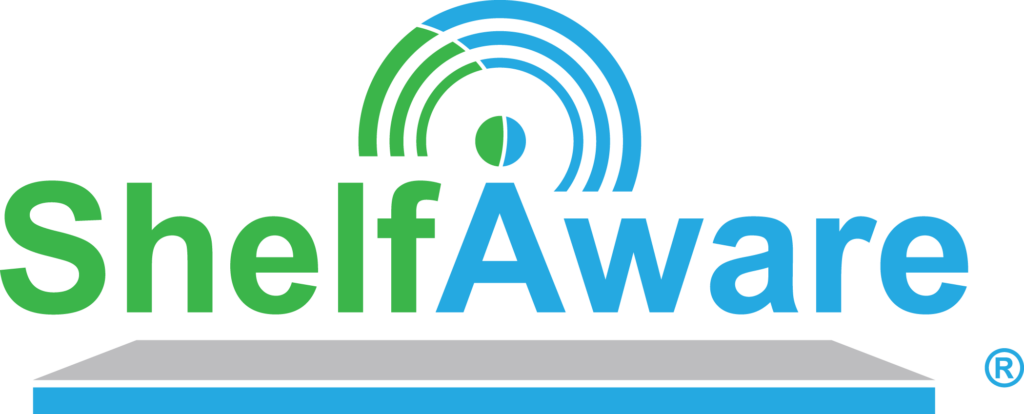Manual inventory management is time-consuming, prone to human errors, and generally leads to data that is inaccurate and unreliable. Digitizing inventory doesn’t have to be an expensive or overwhelming task. In fact, with a platform like ShelfAware, suppliers and consumers can make more money with less worries and eliminate stockouts with an easy-to-manage, cloud-based digital vender management inventory system.
Relying on traditional inventory tracking systems that are ineffective, time consuming, and error prone are quickly becoming a thing of the past as manufacturing suppliers and consumers continue to invest in cloud-based, data-driven automation to manage their inventory and supply chain.
However, many suppliers have inefficient vendor managed inventory (VMI) systems that are also time and resource intensive, expensive to scale, and hard to manage. Consumer supply chains have become more complex and difficult to manage while consumer expectations continue to grow.
Manual data capture methods (barcodes, barcode scanners, paper, and clipboards) are ineffective, cumbersome, and hated by consumer users. In addition, traditional purchasing methods that use blanket purchase orders and forecasting rarely produce accurate results. Current supply chains generate very little usable data for meaningful analytics.
Cloud-Based, Data-Driven Solution to Traditional Inventory Management
One solution to achieving more effective inventory management is ShelfAware, a digitized VMI platform that combines proven hardware with custom software to create an inexpensive and easy-to-deploy automated supply chain system.
ShelfAware turns any shelving, racks, or floor space into a virtual vending machine, providing a magical user experience with three easy steps—Pick, Scan, Go. Using smart labels powered by RFID tags and a mobile scanner and app to perform on-hand inventory audits in minutes, ShelfAware has the flexibility to track any inventory—no matter the size, shape, or weight.
An RFID printer prints and encodes smart labels at the point of shipping while a flexible scanning station monitors onsite inventory consumption.
Unique Advantages of an Effective Digital VMI System
Businesses that want to remotely manage a complex physical inventory can automate industrial wholesale supply chains with ShelfAware’s sophisticated, intelligent, easy-to-use RFID inventory management software.
RFID technology offers many advantages for an inventory management solution that revolutionizes the supply chain:
- There is a growing online community built around the idea of Cloud Sourcing™. This collaborative approach to B2B supply chain management offers the market’s first true omnichannel platform that accommodates both the physical (inventory – logistics, storage, tracking consumption, organizing, etc.) and the digital (data – analytics, forecasts, replenishment metrics, etc.) aspects of complex supply chains. Plant managers can put any of their current suppliers on the system to create the open platform, which provides one-touch integration across all channels to provide a superior customer service experience. Adoption of tech systems usually means plant managers must make big changes, but that is not the case with this technology.
- It shifts the competitive advantage back to the independent suppliers. Through collaboration, they can thrive again in the marketplace.
- This original solution is not based around traditional archetypes like “sales reps in trucks,” or vending machines that would eat your money and not give you the candy bar, or plastic bin-based inventory Kanban systems.
- It’s a simple solution to automate physical inventory supply chains that also provides an established foundation for a new approach to eCommerce. The system digitizes physical inventory consumption and uses that data to automate every aspect of the supply chain, regardless of complexity.
How ShelfAware Easily Automates Your Supply Chain
The ShelfAware platform focuses on RFID Smart Labels as a data collector. They are printed on standard Zebra label printers and applied at the time of shipping by suppliers. ShelfAware deploys an RFID checkout station on behalf of the supplier at the consumer facility.
This magical user interface is capable of tracking the consumption of thousands of inventory packages in seconds, which ensures broad user adoption. This inventory consumption data is leveraged by the ShelfAware web-based application to automate replenishment, ensure lean inventory quantities, and guarantee no stock-outs.
The result is an effectively automated B2B supply chain that saves time and labor for both the supplier and the consumer. Case studies have shown that ShelfAware is 85% more efficient than traditional supply chain processes.
ShelfAware was designed to automate industrial wholesale supply chains and provide a platform for independent industrial suppliers to collaborate and collectively supply the industry’s largest consumers on an automated, omnichannel. This is ShelfAware’s unique Cloud Sourcing™.
ShelfAware’s Cloud-Based Inventory Management Solution
ShelfAware is revolutionizing supply chain management through the power of collaboration. Independent suppliers work together with a single consumer on a single RFID IoT supply chain platform.
Thanks to its unique use of Cloud SourcingTM, ShelfAware is a great fit for any business trying to remotely manage a complex physical inventory. More specifically, ShelfAware was designed to automate industrial wholesale supply chains and provide a platform for independent industrial suppliers to collaborate and collectively supply the industry’s largest consumers on an automated omnichannel.
How to Get Started With Automating Your Supply Chain
Implementing ShelfAware’s robust platform is often complex, but does not need to be slow. It begins with a group conversation involving a mix of finance, operations and IT professionals. A site audit (often multiple sites) is usually required before a proposal can be made.
Final proposals usually involve a formal stocking agreement, installation fee, and a product pricing quote. Onboarding consumers varies widely, but the minimum time required to convert a supply chain in most markets is about three months.
Want to learn more about an affordable way to automate your supply chain? Request your free ShelfAware demo
Too good to be true? ShelfAware is redefining the vendor-managed inventory industry. For this reason, we’re happy to talk to you about how our intelligent inventory platform can benefit your business. Contact us today for more information.
More articles about using a digital vendor managed inventory system to solve your supply chain challenges:
How Automation Solves America’s Broken Supply Chain
How Supply Chain Automation Gives Your Company a Competitive Edge
Everything You Need to Know About Digital Vendor Managed Inventory
Why Cloud SourcingTM is a Game Changer for Digital VMI Systems
What Kinds of Manufacturing Businesses Can Benefit from Inventory Management Software?
Top 10 Advantages of RFID Inventory Tracking
7 Ways to Save Time and Money with an RFID Inventory Management System
How Automation Improves Manufacturing Operational Efficiency






